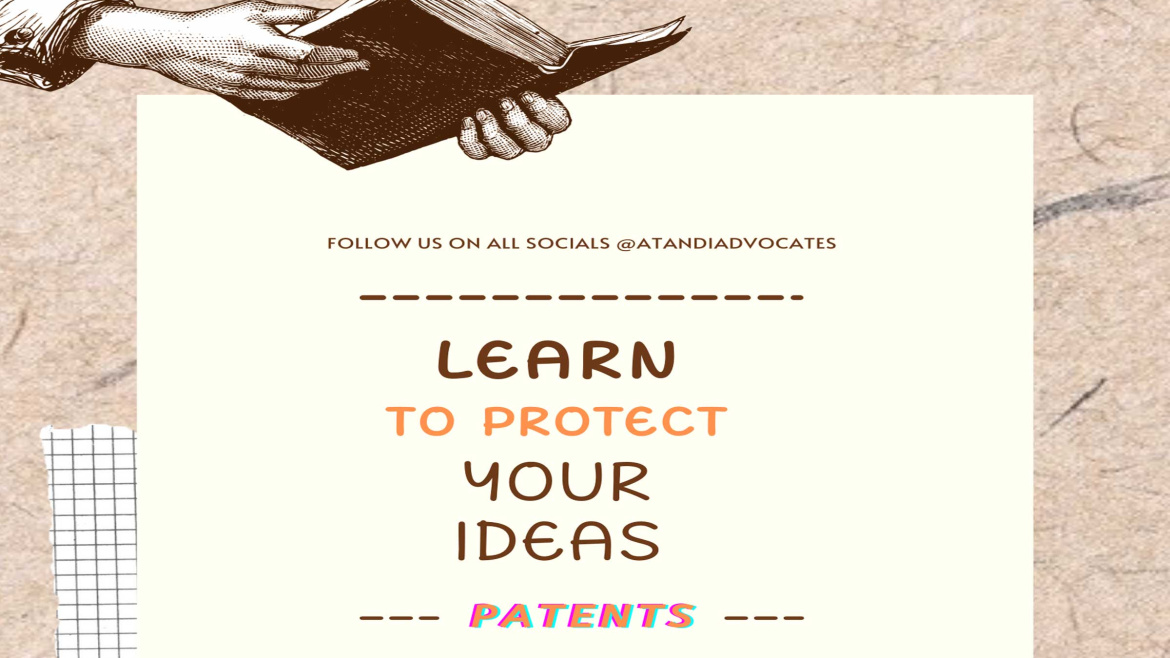Registration
first of all Ideas cannot be protected unless they are expressed in specific ways. That way, there are Rights assignable to the Ideas (IP- see Defination here ). Just as with any Rights, they, also come with Obligations.
Thats how we begin to refer to intellectual property in the form of Ideas. These are reduced to concepts such as:
- copyright.
- patents.
- trademarks.
- registered design.
- plant breeder’s rights.
- circuit layout rights.
- moral rights.
- confidential information (including trade secrets).
Why register?
Registration gives you:
- the right to exclude others from making your product;
- exclusivity, as the patent holder you will have time to market the invention without competition;
- the right to initiate legal action against anyone that is making or selling, without your permission;
- opportunity to make money by licensing or selling your invention to another party;
- priority over third parties wanting to register their patents in countries that do not require registration.
We dsicuss PATENTS. Unlike copyright patents are not automatically protected. It is very important that you don’t disclose the patent to the public before registration is obtained. Moreso where you intend to sell your product abroad, it is essential to obtain registration of the patent abroad in the respective countries. You may file one application in Kenya and designate the same to any or all those countries.
Requirements for registration are as follows:
- The invention must be new;
- It must involve an inventive step; and
- Must be capable of industrial application.
Generally any device, substance, method or process invented can be patented. Therefore you should be able to obtain registration of the patent once the requirements are fulfilled. It is only methods and schemes of doing business, scientific and mathematical formulas, methods of treatment of animals and humans and artistic creations that cannot be patented.
Requirements for registration
For the application for a patent the requirements are as follows:
1. A request (Form IP 3) available from KIPI offices;
2. A description which should:
- state the title of the invention
- specify the technical field to which the invention relates;
- indicate the background art which, as far as it is known to you, can be regarded as useful for the understanding, searching and examination of the invention; and
- indicate how the invention is industrially applicable.
Claims
Claims refer to what the inventor intends to protect. You should be able to define the matter for which the protection is sought. Therefore your claim should set out:
- the technical features that are necessary to define the subject matter of the invention but that are part of the prior art; and
- the technical features that, in combination with the features referred to above, define that for which protection is sought.
- One or more drawings (in this case it may not be necessary as it is not applicable)
- If more than one claim is included in an application, the claims should be numbered.
An abstract
The requirement herein is that the abstract should include the title of the invention and a summary of the disclosure included in the description. The summary should indicate the technical field to which the invention relates and the principal use or uses of the invention. The abstract should be in a way that it can be used efficiently for searching in the relevant technical field and so that it is possible for a reader to assess, from the abstract, whether the description should be consulted.
In this case the abstract should include the formula that best characterizes the invention. You should be able to reduce this to not more than one hundred and fifty words.
Examination process
Kenya Industrial Property Institute (KIPI) which is a Government department under the Ministry of Trade and Industry, is required to assess or examine the patent application to ascertain that it meets the requirements of the Industrial Property Act 2001. Examination is not automatic, and you must request within 3 years for the patent application to be examined. Patent applications are often not accepted in their initial form. The Institute will inform you of any deficiencies and give an opportunity to make changes to the application. Frequently, problems occur because the application is either not clear, or you seeking protection for something that is already known. When the Institute is satisfied that the deficiencies have been corrected, it will accept your application and a patent certificate is issued.
Fees
Patent costs vary from case to case and increase significantly if one seeks patents overseas. To file an application in Kenya, at a minimum of kshs.14, 000 application fees, exclusive of the fees that you will pay your agent.
Term of a patent
The term of patent protection in Kenya is 20 years. This term is not renewable. Once the term has expired, the invention is longer protected and can be exploited by anyone. The law requires the patent to be renewed every year for the entire duration of protection and if the patent is not renewed the rights lapse.
Problems when applying for a patent
It is important that:
- The patent application describes the invention properly;
- The invention should described to show how new it is when compared with things that are already known. For example a similar invention may have been published in an earlier patent document; or
- The application is for something that is not patentable such as a principle, idea or concept rather than its practical adaptation.
Conclusion
Therefore it is important that you make informed and realistic decisions about your intellectual property rights. The patent for the application is registrable. Nonetheless the registration process is rigorous and tends to take a long period of time. Nonetheless considering the business viability of the invention it is worthwhile that you spend money seeking patent protection.



